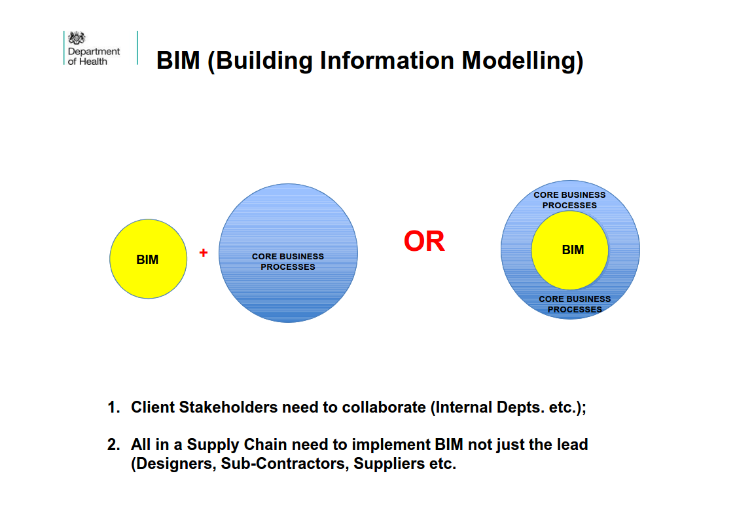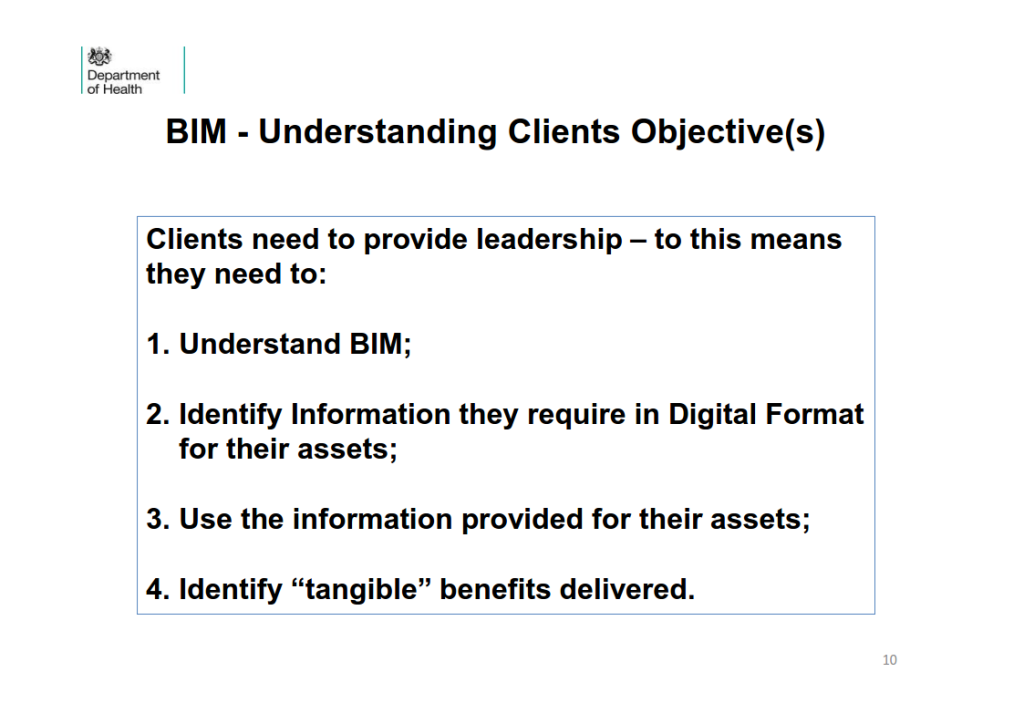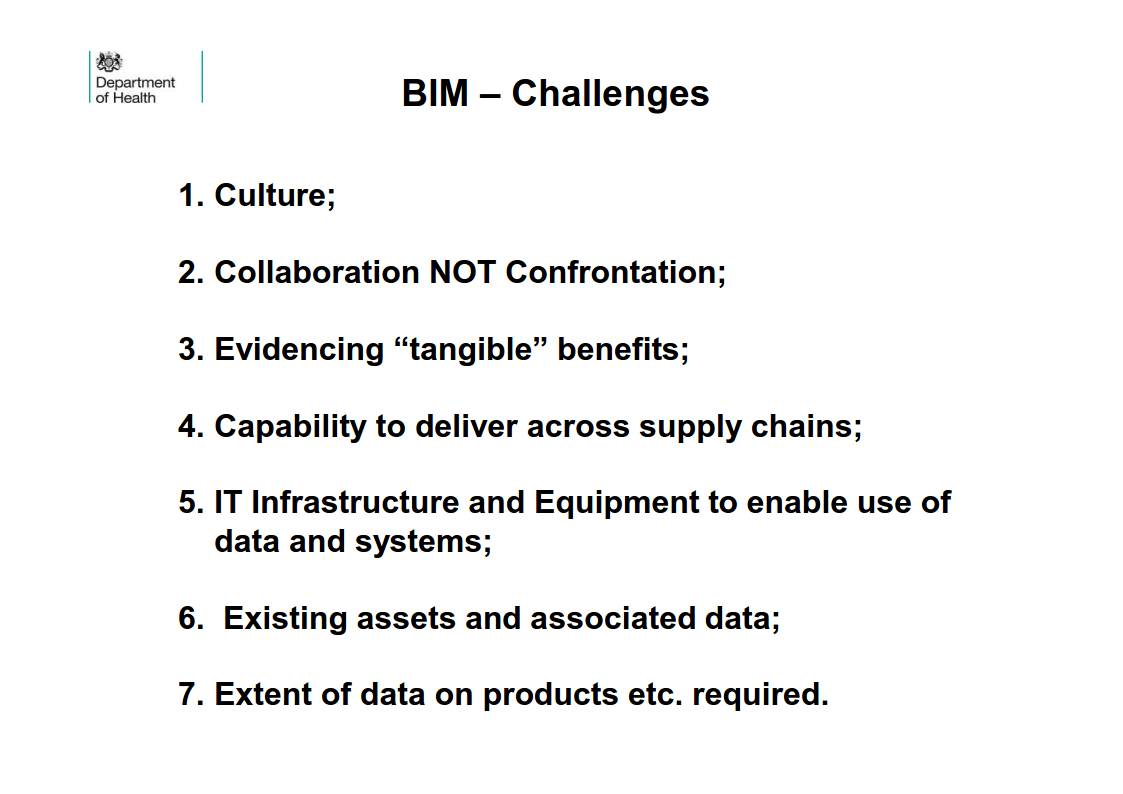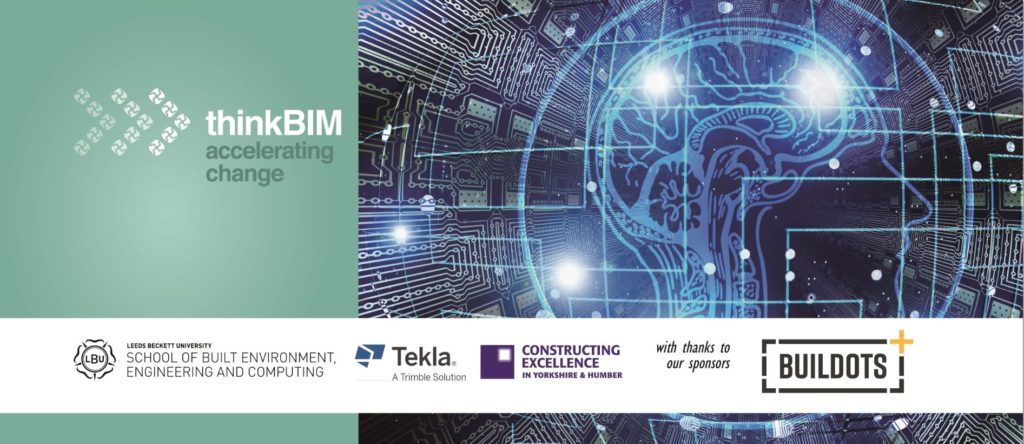Delivering Digital Assets under the Level 2 Mandate

October brought in the first event of our Autumn series and a return to The Rosebowl as the venue for our twilight seminar on how centrally procured departments are delivering Level 2 BIM Under the mandate.
The evening opened with a fantastic presentation from Cliff Jones, the Head of Construction Procurement, at the Department of Health. It was great to hear his measured, but equally challenging, view on how he see that BIM has – and more importantly should – be adopted in the NHS. Cliff made the very important point early on in his presentation that BIM isn’t an add-on; it has to be integral to the wider construction and business process of an organisation.
 He also noted that BIM = Lean but reminded the audience of what Lean really means – it’s not about cost cutting, it is about driving out waste.
He also noted that BIM = Lean but reminded the audience of what Lean really means – it’s not about cost cutting, it is about driving out waste.
|
BIM = Lean (NOT Cost Cutting – Improved Efficiency and Productivity)
|
Whilst the benefits of the P21+ and P22 Frameworks provided ample evidence of how collaborative working can improve outcomes it was some of the more nuanced comments that caught my attention. The DoH hasn’t mandated the use of BIM by the NHS as such as it understands that forcing something on Trusts won’t work – from the very start they have to want to do it. This was a very powerful point for me.
Cliff rounded up his presentation with some very real and useful points on how to adopt BIM on projects.
Due to a last minute cancellation by our other speaker thinkBIM showed its agile credentials by organising Steering Group member Tom Oulton to review the recently published Ministry of Justice (MOJ) BIM documentation. These documents can be found here http://bit.ly/29b13Kq
The MoJ launched their Client Best Practice Guides in June this year but like many other things associated with BIM development not everyone in the audience was aware of their existence. They were developed by the client led BIM2AIM Special Interest Group, in a process led by Matthew Watchorn, MoJ Head of BIM. In an article in BIM+ recording the launch event of the documents Matthew is quoted saying –
“Dismantling, examining and jointly rebuilding the EIR suite of standards from the bottom up was a fundamental moment in the MoJ BIM story and will stand us and other government departments in good stead in making the next phase of BIM a reality for projects going forward”
It always strikes me as a bit strange that the industry seems to clamber for examples or Case Studies about BIM only to then complain about anything that is produced. Personally I feel that the industry shouldn’t keep shooting at those people or organisations that do stick their heads over the battlements. It might not be perfect but at least they have published something. But Tom is a good judge of BIM character and led a spirited, yet balanced, discussion over the merits of these documents.
With just a few days to review the SES, OIRs, PLQs, EIRs, and BEP template Tom chose to rate the documents overall using that tried and tested metric of the spaghetti western standard. So – were these documents Good, Bad or Ugly?
Tom gave his views of the following documents that have been publically shared by the MoJ;
- Shared Estates Service (SES)
- Organisational Information Requirements (OIR)
- Plain Language Questions (PLQs)
- Employer’s Information Requirements (EIR)
- BIM Execution Plan (BEP) Verdict – GOOD. Verdict – Good…but…Would like to see the Common Data Environment (CDE) addressedOIRs The OIR lays out the context but falls short of stating specific requirements. Verdict – BADThree fully populated EIRs should be provided, preferably with real examples for eachBEP The document is easy to follow
- But Tom felt that the CDE should be owned by MoJ (and I agree)
- Verdict – Good
- The Shared Estates Services introduces the Gold, Silver and Bronze projects – but only one EIR
- EIRs
- Reads like a guidance document, not the actual document.
- Verdict – good & bad…
- Would like to see COST addressed prior to Stage 2 PLQ
- PLQs
- The guide nicely sets the scene for BIM
- Shared Estates Services;
- And the results from Tom’s review?
It was great to see the audience engage with the speakers in the Q and A sessions and reminded me of the importance of letting our delegates find out what is important to them around the themes discussed.
This format will be extended even further in our Autumn series conference, on December 7th, when we will be offering even more roundtable sessions all focussed around Case Studies – so just what the industry still seems to need.
But before then we are pleased to be hosting a Level 1 BIM event on November 2nd. We all (should) know of the importance of working in accordance with BS1192:2007+A2:2016 but how many of us really apply the standard correctly? Check out your knowledge at this great opportunity to understand one of the bedrock standards for UK BIM that is now expected to be rolled out across Europe and beyond.
thinkBIM blog, October 2016.
#Duncan Reed, Chair thinkBIM





